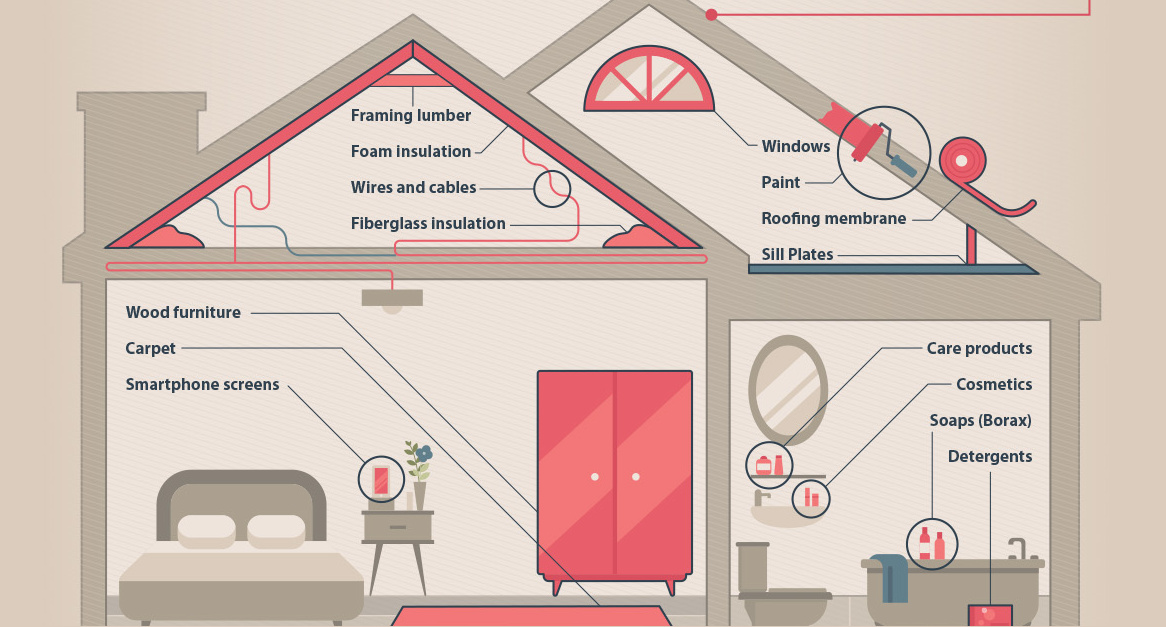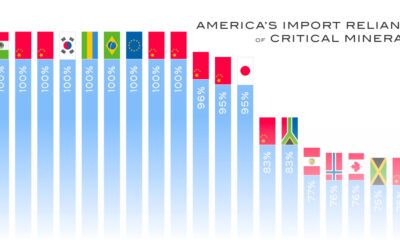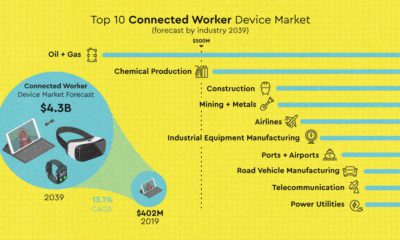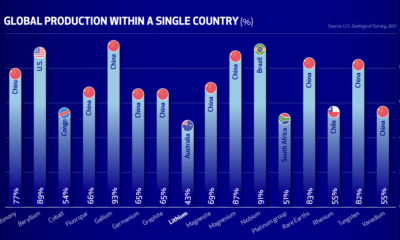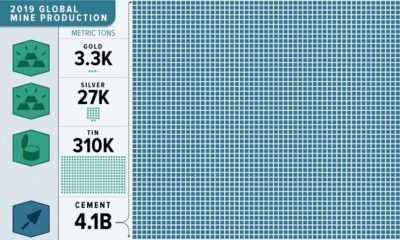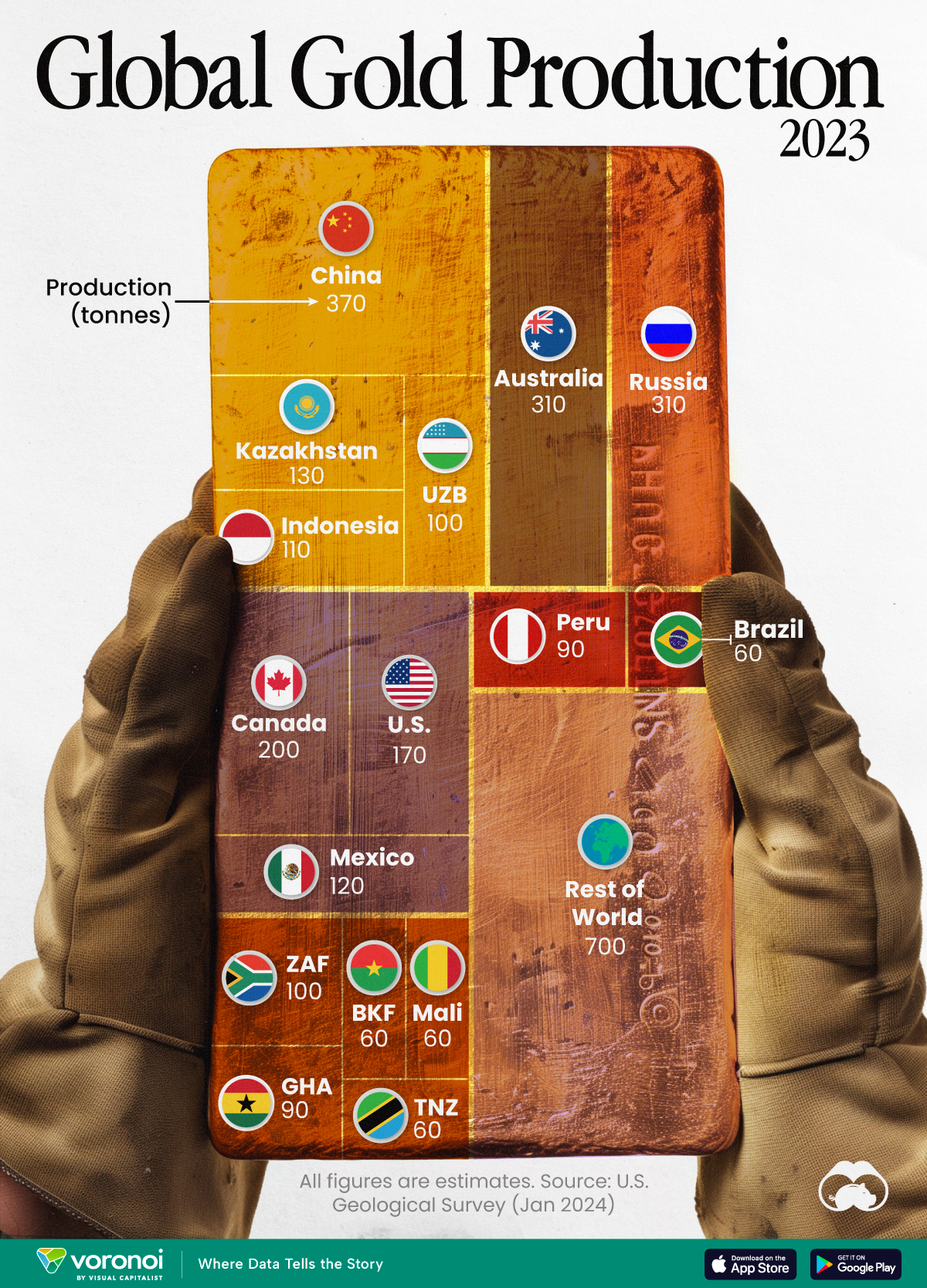Mining
Boron: Making Modern Life Possible

Boron: Making Modern Life Possible
When it comes to modern living, there are so many things we take for granted.
We sleep in warm and comfortable houses, while keeping our food fresh and refrigerated. We have screens in our pockets and throughout our homes that help us to connect with our friends and family – and we can drive across town in minutes to see them, if need be.
Oddly enough, many of these subtle aspects of modern living would not be possible without the existence of very specific minerals and the developments in technology that allow them to be used to their full potential.
Enter Boron
Boron is an unlikely hero in this regard.
Today’s infographic comes from 20 Mule Team Borax, and it covers the properties, applications, market, and future trends surrounding boron. And even though you probably didn’t know much about this metalloid element before today, you’ll soon see that boron’s versatile applications make it an integral part of modern life in many ways:
In fact, boron has an incredible range of properties and uses that make it interesting to us humans:
- It’s an essential micronutrient for plants
- It improves the performance of cleaning products
- It captures neutrons, making nuclear reactors safer
- It absorbs infrared light, useful for energy efficiency
- Boron limits growth of bacteria and fungi on wood products
- It helps to balance acidity and alkalinity
- Boron makes glass resistant to heat or chemicals
- Boron prevents corrosion in many settings
- It be used to make advanced materials
- It can be used in materials and coatings to suppress flames
- Boron can be added to steel or aluminum, or used in super-magnets
- It can link alcohols and carbohydrates together in oil recovery
As a result of this vast array of applications, boron is used in everything from smartphone screens to fertilizer.
Small amounts of boron sit in the walls and ceiling of your home, your kitchen, your bathroom, and your driveway – and it’s even in a lot of food since it is an essential micronutrient for plants.
Future Megatrends
There are three megatrends that are driving future boron consumption: urbanization, energy, and agriculture.
Urbanization
By 2025, China will have 221 cities with over 1 million people. Boron is heavily used in cities and buildings, in applications such as glazed ceramics, LCD televisions and electronics, appliances, and textile fiberglass.
Agriculture
Because boron helps regulate the reproductive cycle of plants, it is needed to help maximize food production for a growing population. In India, the use of boron and other micronutrients is being supported by government projects and subsidies to ensure that farmers increase productivity.
Energy
Boron is also used in energy saving applications such as insulation, which will be key as green building practices are encouraged throughout the world. Borates are also used to create the high-powered magnets in applications like wind turbines, making them even more important for a green future.
Mining
Visualizing Global Gold Production in 2023
Gold production in 2023 was led by China, Australia, and Russia, with each outputting over 300 tonnes.
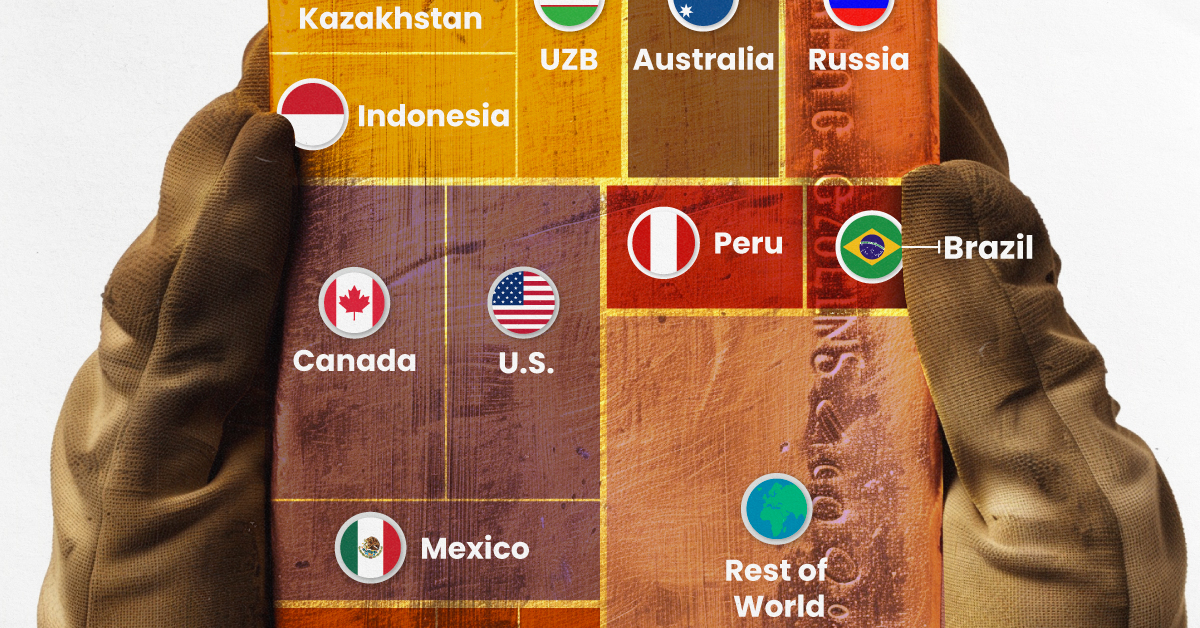
Visualizing Global Gold Production in 2023
This was originally posted on our Voronoi app. Download the app for free on iOS or Android and discover incredible data-driven charts from a variety of trusted sources.
Over 3,000 tonnes of gold were produced globally in 2023.
In this graphic, we list the world’s leading countries in terms of gold production. These figures come from the latest USGS publication on gold statistics (published January 2024).
China, Australia, and Russia Produced the Most Gold in 2023
China was the top producer in 2023, responsible for over 12% of total global production, followed by Australia and Russia.
| Country | Region | 2023E Production (tonnes) |
|---|---|---|
| 🇨🇳 China | Asia | 370 |
| 🇦🇺 Australia | Oceania | 310 |
| 🇷🇺 Russia | Europe | 310 |
| 🇨🇦 Canada | North America | 200 |
| 🇺🇸 United States | North America | 170 |
| 🇰🇿 Kazakhstan | Asia | 130 |
| 🇲🇽 Mexico | North America | 120 |
| 🇮🇩 Indonesia | Asia | 110 |
| 🇿🇦 South Africa | Africa | 100 |
| 🇺🇿 Uzbekistan | Asia | 100 |
| 🇬🇭 Ghana | Africa | 90 |
| 🇵🇪 Peru | South America | 90 |
| 🇧🇷 Brazil | South America | 60 |
| 🇧🇫 Burkina Faso | Africa | 60 |
| 🇲🇱 Mali | Africa | 60 |
| 🇹🇿 Tanzania | Africa | 60 |
| 🌍 Rest of World | - | 700 |
Gold mines in China are primarily concentrated in eastern provinces such as Shandong, Henan, Fujian, and Liaoning. As of January 2024, China’s gold mine reserves stand at an estimated 3,000 tonnes, representing around 5% of the global total of 59,000 tonnes.
In addition to being the top producer, China emerged as the largest buyer of the yellow metal for the year. In fact, the country’s central bank alone bought 225 tonnes of gold in 2023, according the World Gold Council.
Estimated Global Gold Consumption
Most of the gold produced in 2023 was used in jewelry production, while another significant portion was sold as a store of value, such as in gold bars or coins.
- Jewelry: 46%
- Central Banks and Institutions: 23%
- Physical Bars: 16%
- Official Coins, Medals, and Imitation Coins: 9%
- Electrical and Electronics: 5%
- Other: 1%
According to Fitch Solutions, over the medium term (2023-2032), global gold mine production is expected to grow 15%, as high prices encourage investment and output.
-

 Technology6 days ago
Technology6 days agoAll of the Grants Given by the U.S. CHIPS Act
-

 Uranium2 weeks ago
Uranium2 weeks agoThe World’s Biggest Nuclear Energy Producers
-

 Education2 weeks ago
Education2 weeks agoHow Hard Is It to Get Into an Ivy League School?
-

 Debt2 weeks ago
Debt2 weeks agoHow Debt-to-GDP Ratios Have Changed Since 2000
-

 Sports2 weeks ago
Sports2 weeks agoThe Highest Earning Athletes in Seven Professional Sports
-

 Science2 weeks ago
Science2 weeks agoVisualizing the Average Lifespans of Mammals
-

 Brands1 week ago
Brands1 week agoHow Tech Logos Have Evolved Over Time
-

 Energy1 week ago
Energy1 week agoRanked: The Top 10 EV Battery Manufacturers in 2023

